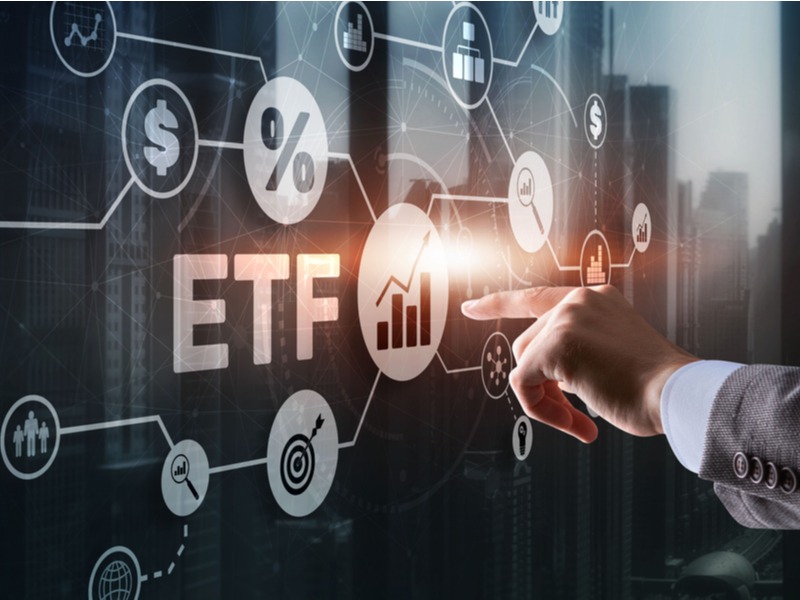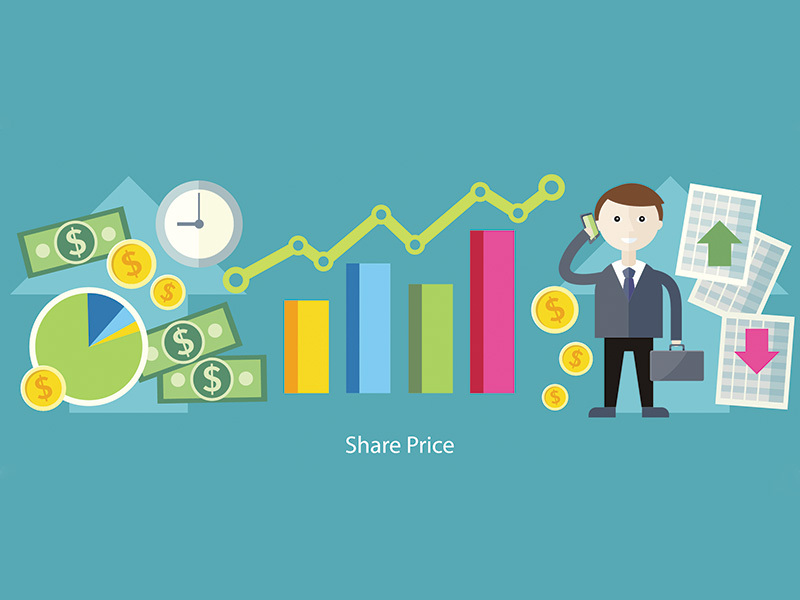
ETFs or Exchange-Traded funds have recently gained significant acceptance among Indian investors. This is essentially due to the unique features that ETFs offer vis-à-vis mutual funds. These financial instruments are particularly beneficial for investors who may lack the technical skills of analyzing and selecting individual stocks for investment. As these instruments grow in popularity, various mutual funds have started offering ETFs that replicate indices like NSE with an objective to provide returns in line with the total returns of the securities that constitute the index. There are different types of ETFs available in the Indian markets today.
Here, we will explore the basic concept of ETF and the different ETF categories available for investment.
What is an ETF?
An ETF is a basket of securities that mirrors the benchmark index’s composition, for example, Sensex or Nifty. Thus, the value of an ETF reflects the net asset value of the basket of securities that it invests in. While ETFs are similar to mutual funds, their features are closer to those of Index Funds that are passively managed and listed on stock exchanges
While mutual funds aim to outperform a benchmark index, ETFs mainly track the benchmark index and aim to replicate its returns. Similar to stock investments, investing in ETFs requires an investor to have a demat and a trading account with a registered stock broker.
Types of ETF in India
Listed here are the commonly available ETFs for investment in the Indian markets:
Index ETFs
Index ETFs are the most common ETFs that also happen to be the oldest form of ETFs. These funds invest in securities as per their proportion, reflected in an existing index. Through Index ETF investment, investors can avail the benefit of portfolio diversification, since these replicate the underlying index performance.
Gold ETFs
Gold ETFs offer investors an avenue to participate in the bullion market without the hassle of buying and storing physical gold. Gold ETF units can be bought or sold on a real-time basis through stock exchanges where the ETF is listed. Physical gold investment requires investors to have large sums of money, whereas Gold ETFs offer units in small denominations as investors can get exposure to gold through Systematic Investment Plans (SIPs). Gold ETFs prices mostly move in sync with the physical gold prices. If gold prices rise, the value of ETFs also appreciates and falls in case gold prices drop.
Bank ETF
Bank ETFs invest in stocks of banks that are listed on the index that the fund follows. Since banks are the center of most financial activities, bank stocks experience high volatility. Therefore, Bank ETFs can be highly volatile and offer relatively higher liquidity, thereby allowing investors to trade these on margins. Investors or traders can track the price movements of the underlying stocks and use short or long positions as per the market situations.
Liquid ETFs
Liquid ETFs aim to maximize returns and minimize risks by investing in:
- short-term government securities,
- call money, and
- money market instruments that have short maturities
These ETFs mainly prioritize safety and liquidity of investment.
International ETF
International ETFs, as the name suggests, invest in foreign securities. These passive funds follow an underlying index. However, the choice of index may vary across fund managers. Funds that enjoy a wider global coverage may offer higher diversification by spreading the investment across hundreds of global companies.
Did you know?
Despite the impact of the pandemic, the ETF assets under management (AUM) rose by 72% in the past 12 months, which is approximately double the AUM growth of the entire mutual fund industry.
Reasons to invest in ETFs
Here are some of the top reasons why investing in ETF can be beneficial:
Low cost
ETFs involve much lower expense ratio as compared to mutual funds, sometimes being as low as 0.25%. Mutual funds generally have expense ratios in the range of 1.5% – 2.25% since these are actively managed. Therefore, from a long-term perspective, ETFs can beat mutual funds as far as fetching higher returns in the hands of the investor is concerned.
Simplicity
ETFs offer simplicity of investing as compared to actively managed mutual funds. An investor need not analyze the fund’s past performance or study the fund manager’s investment style in case of ETFs. Since most ETFs track indexes like Nifty, Sensex, etc. these are also suited to new investors who do not have the expertise of studying a fund performance.
Limited risk
Since indices are based on market capitalization, investing in their composition can help in eliminating or reducing the weight age of underperforming stocks in the ETF portfolio. Thus, ETFs too can eliminate such risk or balance it out.
Easy to track
A number of factors influence the performance of a mutual fund, such as the fund manager’s track record, AMC’s track record, etc. It may require investors to have some expertise in identifying a good mutual fund that is capable of outperforming its peers and the index in the future. Exchange-Traded Funds, however, track a benchmark index and therefore carry limited scope of out-performance or underperformance.
How to select ETFs and Index Funds?
Mentioned below are some of the important parameters that investors should consider while investing in ETFs:
- Liquidity: Liquidity is a crucial factor for ETFs, since unlike mutual funds, ETFs can be bought and sold on stock exchanges. If an ETF lacks liquidity, investors may not find sufficient buyers at the time of selling their ETF.
- Expense ratio: While ETFs, in general, carry lower expense ratios, investors must look out for specific ratios being charged by schemes. It makes sense to compare ratios of different ETFs before selecting one for investment.
- Tracking error: Tracking error is the difference between an ETF return and the returns of an index. This is a crucial determinant while evaluating an ETF performance because an investor investing in an ETF is effectively investing in the index.
Conclusion
Thanks to increased retail interest in the exchange-traded funds (ETF) category, these have overtaken the liquid funds to become the largest mutual fund types as far as assets under management (AUM) is concerned. Considering the different types of ETFs available in the Indian market, investors have a variety of investment choices depending on their risk-return expectations and investment goals.
FAQs
ETFs can be bought through a new fund offer issued by an AMC or via the secondary market on the stock exchange, where the same is listed. Just like equity shares, these are traded on stock exchanges during regular market hours.
Since ETFs are traded on stock exchanges, a buy or sell order for the same has to be done via a trading account. Post settlement, the ETF units are credited to the buyer’s Demat account. Therefore, it is essential to have a Demat account to buy ETFs.
A primary difference between index funds and ETFs is that the former are mutual fund schemes which do not require investors to have a demat or trading account. However, to invest in ETFs a demat and share trading account is essential. ETFs are also cheaper than index funds. The expense ratio in index funds is also slightly higher than ETFs.
There is no minimum investment amount in ETFs as investors can also buy 1 share of an ETF.
Investors must look at factors such as expense ratio, tracking error, fund category, and trading volume while narrowing down on an ETF for investment.


























